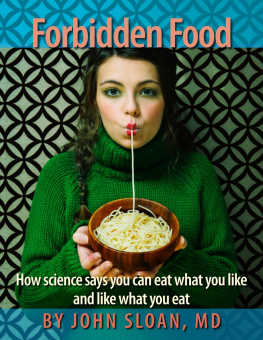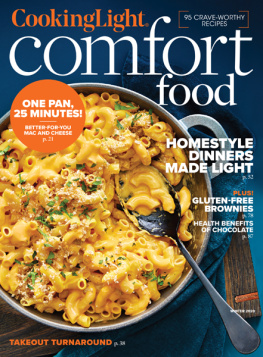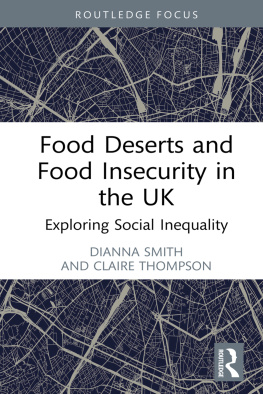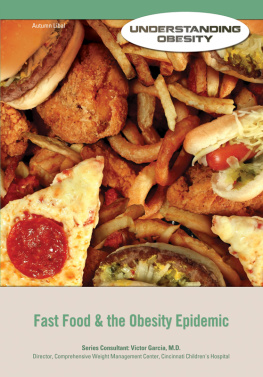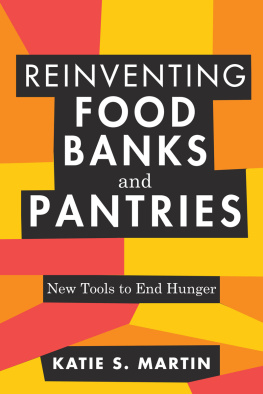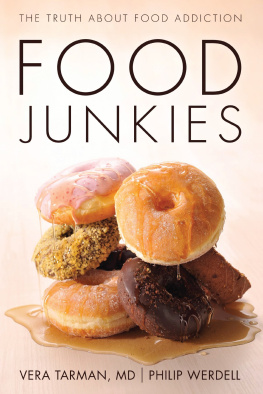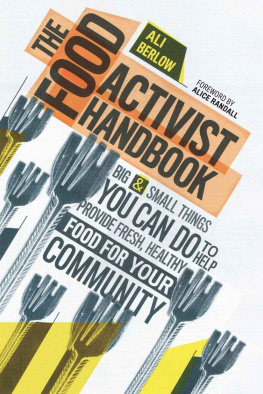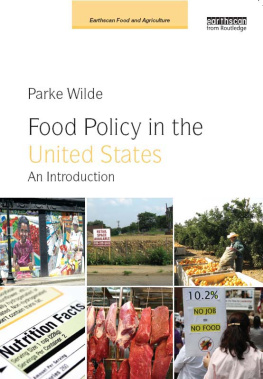FOOD AND POVERTY
FOOD
AND POVERTY
Food Insecurity and Food Sovereignty among Americas Poor
Edited by Leslie H. Hossfeld, E. Brooke Kelly, Julia F. Waity
Vanderbilt University Press
Nashville
2018 by Vanderbilt University Press
Nashville, Tennessee 37235
All rights reserved
First printing 2018
This book is printed on acid-free paper.
Manufactured in the United States of America
Library of Congress Cataloging-in-Publication Data on file
LC control number 2017044692
LC classification number HV696.F6 F63145 2018
Dewey classification number 363.80973dc23
LC record available at lccn.loc.gov/2017044692
ISBN 9780-826522030 (cloth)
ISBN 9780-826522047 (paperback)
ISBN 9780-826522054 (ebook)
To all those who struggle with food, lifes most basic necessity.
CONTENTS
Myriam Paredes and Mark Edwards
Maureen Berner and Alexander Vazquez
Michael Jindra and Nicolas Larchet
Raphal Charron-Chnier
Michael D. Gillespie
Don Willis and Kevin M. Fitzpatrick
Kaitland M. Byrd, W. Carson Byrd, and Samuel R. Cook
Jennifer W. Bouek
Rachel Wilkerson, Kathy Krey, and Linda English
Marie C. Gualtieri
Stephen J. Scanlan and Sam Regas
Gloria Ross and Bill Winders
Erin Nolen, Jeremy Everett, Doug McDurham, and Kathy Krey
Marina Karides and Patricia Widener
Building Food Justice in the Face of Profiteering and Exclusionary Practices Christy Mello
Access and Quality: Notes from the Field Ameena Batada and Olufemi Lewis
Gabrielle Roesch-McNally, Jacqueline Nester, Andrea Basche, Eric Christianson, and Emily Zimmerman
Carmel E. Price and Natalie R. Sampson
ACKNOWLEDGMENTS
Editing a book of this scope necessitates help from many people. We are particularly grateful to the authors who contributed such meaningful and insightful chapters. We also appreciate the endless support from Michael Ames at Vanderbilt University Press, who early on believed in this project and knew immediately of its importance. We are also grateful to the anonymous reviewers who provided supportive feedback on the manuscript.
INTRODUCTION
The Mississippi Delta is a remote part of the United States. Rural, isolated, and poor, the delta has a long history of significant social inequalities of all types, including race, class, and gender. Issaquena County is a small county in the Mississippi Delta with a population of about thirteen hundred people, 40 percent of whom live in poverty. The county is about 65 percent African American. There is no grocery store. There is no place to buy food in the routine sense of going to the grocery store to buy food, no place to get your vegetables and fruityour fresh meat or frozen foodsor simple household supplies that keep your house going on a daily basis. Imagine navigating this basic needfoodand trying to meet this daily need for yourself, for your family.
Imagine not being able to get to a grocery store to purchase something for dinner. Imagine not having access to a real grocery store. Added to this puzzlement of no access to healthy food through a conventional grocery store, it turns out Issaquena County has one of the highest obesity rates in the nation, with 38 percent of adults in the county considered obese.
While the Mississippi Delta may represent an extreme case in the United States, having access to healthy, affordable food is a very real problem in America, not just in remote, poor counties. We may ask, How can this be? How can this exist in the United States? Unfortunately this may be a more common problem than most people realize. Neighborhoods and cities, rural communities, and entire counties often have little to no access to healthy, affordable food.
We may also ask, How can poor counties have such high obesity rates? Isnt poverty related to being underweight and malnourished? If we think about poverty and hunger in developing nations, we often draw on images of starving children who are thin and underweight. Yet, increasingly, the growing problem in the United States in terms of health has to do with food and the food environment in which people live. The type of food we eat, the food that is cheap and plentiful and easy to access, is often food that has little to no nutritional value, and is high in calories and fat.
The Great Recession catapulted the poor into the forefront of Americas conscience in ways not seen since the war on poverty began fifty years ago. With the increased focus on the poor came stories about the newly poor who were turning toward assistance for the first time in their lives, assistance they never thought they were going to need. There are also those in persistent poverty whose circumstances may have been exacerbated by the economic downturn. Food insecurity, or hunger, skyrocketed as did the number relying on federal food assistance programs like the Supplemental Nutrition Assistance Program (SNAP). There has been a growing focus on issues of obesity and access to healthy food.
The story of food and poverty in the United States is a complex and compelling story with many moving parts, many of which focus on the way in which food production has changed significantly in a fairly short amount of time. Indeed there have been dramatic shifts in food production since World War II, changes to meet the increased needs of families and a growing population, and changes due to new technology. Since the 1940s there has been a marked decrease in the number of small family farms, once the mainstay of US food production, to a notable increase in commodity production (soy and corn) together with an increase in large-scale agricultural production. US farm policy since WWII has also changed significantly, with an increased focus on supporting commodity production, and in turn, driving down the costs of commodities such as corn and soybean through government subsidies and support. One of the results of these changes has been the introduction of fructose corn syrup and hydrogenated vegetable oils into the American diet, products that make snacks, soda, candy, and fats very inexpensive, and indeed economical. Farm policy that buttresses the cheap production of these products in recent years has, at the very same time, had very few subsidies to support the costs of fruits and vegetables. Indeed since World War II, we have seen a steady, noticeable increase in the price of fruits and vegetables. It has become easier, and indeed cheaper, to buy junk foodthe low-nutritional, low-cost, long-shelf-life, mass-produced food that is found at every corner store, at every convenience store, and on grocery store shelves. In short, farm policy and food policy is not health policy.
If we look at data from the Centers for Disease Control we see that American adults are twenty-four pounds heavier today than they were in 1960. In direct relationship with the mass production of cheap, high-fat, high-caloric food, obesity rates for American adults have skyrocketed since World War II. If we simply look at high poverty counties and neighborhoods in the United States and overlay these data with obesity rates, we see a striking pattern emerge: the higher the poverty, the higher the obesity rate.
This book is about the complex and perplexing issue of food and poverty in America. There are indeed paradoxes between food and poverty in the United States: paradoxes such as the land of plenty with vast food supplies, juxtaposed with hunger and food insecuritya lack of food; and the overwhelming paradox of obesity coexisting with hunger.


